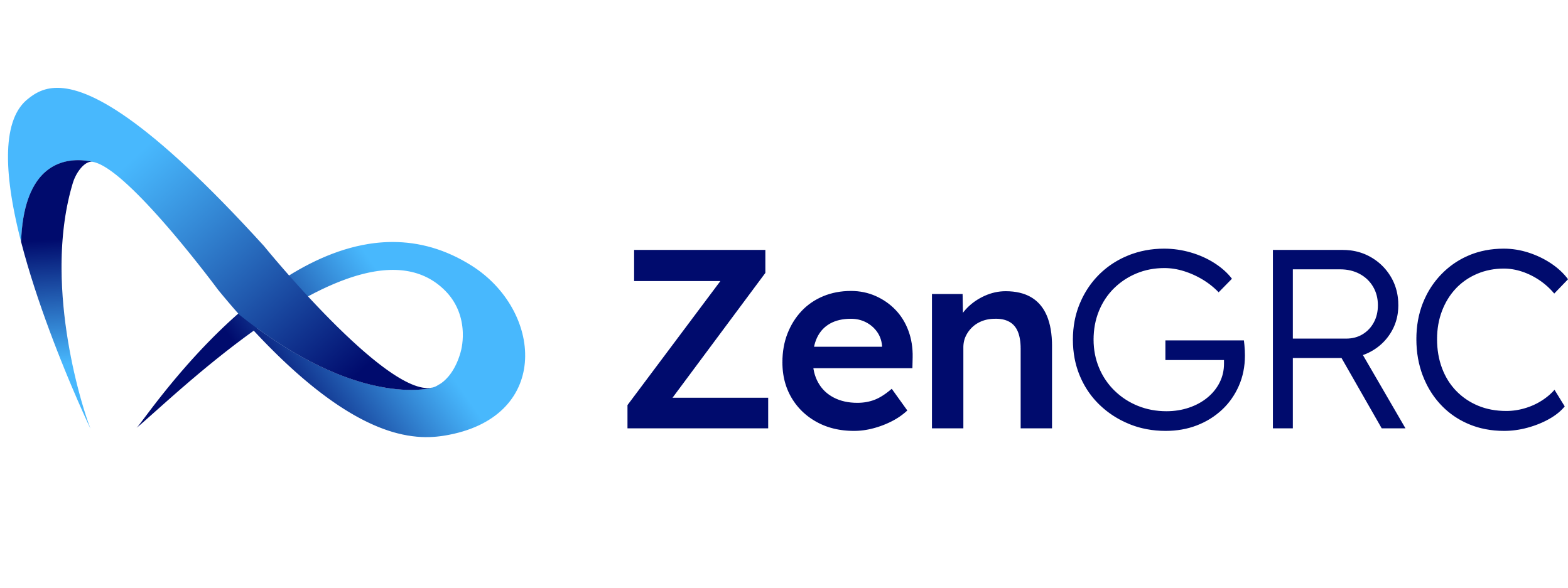Third-party vendor risk begins at onboarding. Manual processes create security gaps through scattered documentation and missed compliance checks. ZenGRC transforms this process with automated workflows and centralized risk assessment, enabling secure vendor relationships from day one. Schedule a demo to see how ZenGRC can strengthen your vendor onboarding process.

Your organization’s security is only as strong as its weakest vendor. From cloud service providers to office supply companies, businesses are increasingly reliant on an expanding network of third-party vendors to operate efficiently. While these partnerships drive innovation and efficiency, they also open the door to potential risks that need to be managed from the very first interaction.
Consider this: According to recent data breaches, some of the most devastating cyber incidents didn’t start with a direct attack on the primary target. Instead, they began with vulnerabilities in vendor systems. The 2013 Target breach, which affected 41 million consumers, originated through an HVAC vendor. More recently, the 2021 Kaseya ransomware attack impacted over 1,500 businesses through a single vendor’s compromised software.
These incidents underscore a crucial reality: effective third-party vendor risk management isn’t just about ongoing monitoring—it begins the moment you start evaluating a potential partner. Yet despite this critical need for early risk assessment, many organizations still rely on fragmented, manual processes for vendor onboarding. Emails fly back and forth with sensitive documents, spreadsheets become outdated almost as soon as they’re created, and critical compliance checks get lost in the shuffle. This approach isn’t just inefficient—it’s risky.
But there’s a better way forward. Implementing robust vendor onboarding practices doesn’t have to be overwhelming. By focusing on key risk areas and leveraging the right tools, you can transform vendor onboarding from a potential vulnerability into a foundation for secure growth.
Key Vendor Onboarding Risks
Understanding the risks your organization faces during vendor onboarding is fundamental to protecting your business’s future. Let’s examine the critical risk areas that demand attention from day one of any vendor relationship.
Data Security: The Digital Trust Exchange
When you onboard a new vendor, you’re often doing more than just starting a business relationship—you’re potentially sharing sensitive data. Whether it’s customer information, intellectual property, or internal operational data, every piece of information you share extends your security perimeter. Without proper vetting and controls established during onboarding, you might unknowingly hand over keys to your digital kingdom.
Compliance: A Chain of Responsibility
Regulators don’t accept “we didn’t know” as an excuse. Regulations like GDPR, HIPAA, and CCPA don’t just hold you responsible for your own compliance—they extend to your vendors. Missing crucial compliance verifications during onboarding can lead to significant penalties and regulatory scrutiny down the line. Your vendor’s compliance gaps become your compliance gaps.
Operational Dependencies: The Integration Impact
As businesses become more interconnected, vendor services often become deeply woven into daily operations. A vendor’s ability to deliver reliable service isn’t just about their current capabilities—it’s about their long-term stability and scalability. Failing to assess these factors during onboarding can lead to operational disruptions that ripple throughout your organization.
Reputational Risk: Your Vendors Are Your Brand
In the eyes of your customers, partners, and regulators, your vendors’ actions reflect directly on your brand. A vendor’s poor security practices, ethical violations, or service failures can severely damage your reputation. The onboarding process is your first—and best—opportunity to evaluate whether a vendor’s values and practices align with your organization’s standards.
Common Challenges in Manual Vendor Onboarding
Organizations attempting to manage vendor onboarding through manual processes face mounting pressure. As vendor networks expand and regulations evolve, traditional approaches create increasingly serious vulnerabilities.
Manual processes hide risk exposure. When vital vendor information scatters across email threads and spreadsheets, you lose visibility into potential threats. Teams waste hours searching for current documentation while compliance gaps grow undetected. Without centralized tracking, you can’t answer basic questions about vendor status with confidence.
Bottlenecks multiply as scale increases. What works for ten vendors fails completely at fifty. Each new vendor relationship adds complexity – more documents to track, more requirements to verify, more stakeholders to coordinate. Manual follow-up becomes unsustainable, and critical steps get missed.
Time spent managing processes could be spent managing risk. Your team’s expertise is wasted on administrative tasks – chasing documents, updating spreadsheets, sending reminder emails. This diverts focus from what matters: evaluating and mitigating actual vendor risks.
Manual onboarding creates friction that damages vendor relationships before they begin. Vendors face redundant requests, unclear requirements, and slow responses. Poor first impressions strain relationships and make future security and compliance collaboration more difficult.
Essential Components of a Strong Vendor Onboarding Process
A strong vendor onboarding process balances thoroughness with efficiency. While each organization’s needs differ, four core elements consistently separate effective vendor onboarding programs from those that create risk.
- Start with Risk Context
Understanding a vendor’s risk profile shapes every subsequent decision in the onboarding process. This goes beyond basic categorization – you need to understand how the vendor will interact with your data, how deeply they’ll integrate with your operations, and what regulatory requirements apply. This context determines the depth of scrutiny needed during onboarding.
- Document Everything That Matters
Documentation isn’t about collecting papers – it’s about building a clear picture of your vendor’s capabilities and commitments. Financial records demonstrate stability. Insurance certificates confirm protection. Security policies reveal maturity. Each document adds to your understanding of whether this vendor can deliver what your business needs.
- Verify Claims, Validate Controls
Strong vendor relationships are built on verified trust. Security questionnaires, compliance certifications, and audit reports provide evidence that vendors can protect your interests. This verification process reveals potential gaps before they become problems and ensures vendors can meet your security and compliance requirements.
- Set Clear Expectations
The onboarding process culminates in clear, documented expectations. Strong contracts define not just services and costs, but performance metrics, security requirements, and incident response obligations. This clarity protects both parties and sets the foundation for a successful relationship.
Streamlining Vendor Onboarding with ZenGRC
Manual vendor onboarding isn’t just frustrating—it’s unnecessary. ZenGRC transforms this crucial process from a potential vulnerability into a foundation for secure growth by providing integrated and holistic risk management throughout your organization.
Managing vendor risk demands more than spreadsheets and email chains—it requires a systematic approach that scales with your business. ZenGRC’s centralized dashboard eliminates information silos, giving your team instant access to vendor information, risk assessments, and compliance status. This visibility turns scattered data into actionable insights.
Through automated evidence collection and tailored security questionnaires, ZenGRC helps you evaluate vendor controls and conduct thorough due diligence. The platform automatically analyzes risks and identifies potential hazards, letting your team focus on strategic decisions rather than administrative tasks.
As your business grows, ZenGRC grows with you. The platform simplifies processes, shortens audit cycles, and helps you avoid duplication by identifying overlaps in compliance requirements. Automated reporting delivers timely updates to stakeholders without creating any additional burden on your team.
Ready to transform your vendor risk management process? Contact us for a demo and discover how ZenGRC can help you build stronger, safer vendor relationships from day one.
